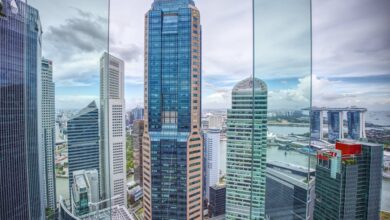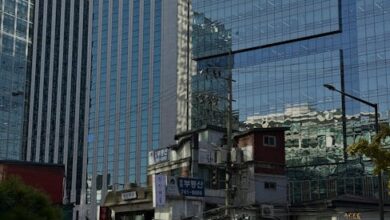The Echoes of a Bygone Bubble: Learning from the Dot-Com Bust

The buzz around Artificial Intelligence is almost deafening, isn’t it? From sophisticated chatbots revolutionizing customer service to algorithms predicting market trends with uncanny accuracy, AI is undoubtedly the defining technology of our era. Venture capital is pouring in, startups are blossoming, and the promise of a smarter, more efficient future seems just around the corner. But amidst all this excitement and innovation, there’s a quieter, more foundational challenge brewing – one that threatens to put a very real, very physical brake on AI’s boundless ambition.
I’m talking about the humble data center, the unsung hero that powers our digital world. Specifically, I’m talking about the electricity that powers these data centers, and the unprecedented demands AI is placing on our global energy grids. We’re witnessing a fascinating, and frankly, concerning, disconnect between the rapid advancement of AI models and the surprisingly analog infrastructure required to run them. And if history has taught us anything, it’s that infrastructure mismatches can lead to some rather painful market corrections. Could the real AI bubble be forming not in the ephemeral world of algorithms, but in the very concrete realm of kilowatts and cooling towers?
The Echoes of a Bygone Bubble: Learning from the Dot-Com Bust
For those of us who remember the heady days of the late 90s, this situation feels eerily familiar. Back then, the internet was exploding, and the prevailing wisdom was to build out as much fiber optic cable as possible. Telecom companies invested billions, laying down vast networks of infrastructure, convinced that demand would inevitably catch up and fill every last strand of glass. It was a “build it and they will come” mentality on a grand scale.
We all know how that story ended. While demand for internet access did grow, the oversupply of network capacity was so enormous that prices plummeted, companies went bankrupt, and the industry faced a painful reckoning. Many perfectly good fiber optic cables lay “dark” for years, a stark reminder of overzealous investment based on speculative demand rather than present realities. The mismatch between available capacity and *paying* demand turned telecom into the epicenter of the dot-com bust.
Today, the landscape is different, but the underlying risk rhymes. Instead of dark fiber, we’re looking at potentially “dark” data centers – facilities built with immense capital, designed for a future AI explosion, but struggling to secure the fundamental resource they need: power. The demand line for AI compute is indeed surging, but if you overbuild capacity in the wrong place, on the wrong timeline, with the wrong financing and customers, the P&L can sink even as the hype soars.
AI’s Insatiable Appetite: The Looming Energy Crisis
Let’s get down to brass tacks: AI is incredibly power-hungry. Training a large language model, for instance, can consume as much electricity as several homes over their lifetime. Every time you ask an AI chatbot a question, or an AI system processes an image, it consumes energy – often a surprising amount. This isn’t just about a few servers; it’s about massive farms of high-performance GPUs, running continuously, generating immense heat that also needs constant cooling.
Analysts are projecting that data-center electricity consumption could more than double by 2030, largely due to the rapid proliferation of AI. To put that into perspective, doubling electricity demand in just six years is a colossal challenge. It’s not just about generating more power; it’s about upgrading aging grids, building new transmission lines, and ensuring that power is available exactly where these new, sprawling data centers are being constructed.
Grid Strain and Green Ambitions
This escalating demand is already putting immense strain on existing power grids in many parts of the world. Utility companies, often operating on long-term planning cycles, are struggling to keep pace with the exponential growth of AI data center projects. Developers are finding themselves in bidding wars for limited grid connections, or facing multi-year delays for new infrastructure to be built.
Adding another layer of complexity is the growing push for “green AI.” Many tech giants have ambitious sustainability goals, aiming to power their operations with 100% renewable energy. This is a noble and necessary goal. However, integrating intermittent renewable sources like solar and wind into a grid already under pressure from surging, always-on AI demand is a monumental task. The sheer scale of green energy needed to power these future AI factories is staggering, requiring vast investments in generation, storage, and smart grid technologies.
Beyond the Megawatts: Location, Timing, and Capital
The power problem isn’t just about the sheer quantity of megawatts; it’s also deeply intertwined with strategic decisions around location, timing, and capital. Imagine a scenario where a company builds a state-of-the-art data center in an ideal geographical location – perhaps near fiber optic lines and a talented workforce – only to discover there isn’t enough reliable grid capacity to power it fully, or the cost of securing that power makes the project economically unviable.
Data center development is a capital-intensive game. Building these facilities requires billions of dollars, and the return on investment can be slow. If developers misjudge future demand, or if they build too quickly in areas without adequate power infrastructure, those assets could sit underutilized, sucking up maintenance costs without generating proportional revenue. It’s a classic case of demand surging, but profitability sinking.
Moreover, the quest for optimal data center locations is becoming fiercely competitive. Developers are seeking not just cheap land, but proximity to abundant, reliable, and increasingly, *renewable* energy sources. This often means moving away from traditional tech hubs, which can present new challenges regarding latency, talent pools, and local regulatory environments. The choices made today about where and how to build these centers will have profound implications for the geography of AI innovation for decades to come.
A Thoughtful Approach to AI’s Future
The AI revolution is here, and its potential is undeniable. But as we collectively push the boundaries of what’s possible with intelligent machines, we must also ground ourselves in the practical realities of infrastructure. The silent squeeze in data center power isn’t a problem that can be wished away; it requires thoughtful planning, massive investment, and coordinated effort across industries and governments.
Bridging this gap means more than just throwing money at the problem. It means investing in smart grid technologies, accelerating renewable energy deployment, innovating in energy efficiency within data centers, and making strategic, long-term decisions about where and how we build our digital foundations. For those investing in, developing, or simply observing the AI space, understanding this fundamental constraint is crucial. The future of AI doesn’t just ride on breakthrough algorithms; it rides on reliable, sustainable power, and ensuring that the real AI bubble doesn’t burst in a blackout.





